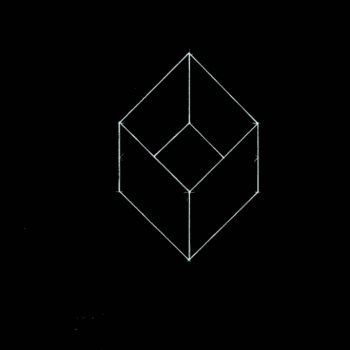We start out with #y=-(x-6)^2-4x^2-2x-2#.
The first thing we want to do is combine like terms, but there aren't any... yet . We need to expand #(x-6)^2#, which we do by rewriting it as #(x-6)*(x-6)# and multiply through to create #x^2-12x+36#.
We plug that into where #(x-6)^2# used to be, and we see this: #y=-(x^2-12x+36)-4x^2-2x-2#. Distribute the #-# into the #(x^2-12x+36)#, changing it to #-x^2+12x-36-4x^2-2x-2#.
NOW we can combine like terms.
#-x^2-4x^2# becomes #-5x^2#
#12x-2x# becomes #10x#
#-36-2# becomes #-38#.
Put it all together and we have #-5x^2+10x-38#. This is not factorable, so we will solve by completing the square. To do that, the coefficient of #x^2# must be 1, so we factor out #-5#. The equation now becomes #-5(x^2-2x+38/5)#. To complete the square, we have to find the value that will make #x^2-2x# factorable. We do that by taking the middle term, #-2x#, dividing it by two (#-2/2 = -1#), and squaring the answer you got (#-1^2=1#).
We then rewrite the equation as #y=-5(x^2-2x+1+38/5)#.
But wait!
We can't just stick a random number in the equation! What we do to one side we must do to the other. Now, I don't know about you, but I don't really want to change #y#. I like having it isolated, but we still have to deal with adding a #1# to only one side of the equation.
But you know, we could just subtract an #-1# , which would cancel out the #1# so it wouldn't effect the equation. Let's do that!
Now the equation reads: #y=-5(x^2-2xcolor(red)(+1-1)+38/5)#. We can simplify #x^2-2x+1# to #(x-1)^2# and simplify #-1+35/5# to just #33/5#. We can simplify the equation to #-5((x-1)^2+33/5)#. The last step is to multiply the #-5 * 33/5#, and because the #5#s divide out (like so: #-cancel(5)*(33/cancel(5))#), all that is left is -33.
Putting it all together, we have #y=-5(x-1)^2-33#.
This is actually in vertex form. All we have to do to find the vertex is take the #y=-5(xcolor(red)(-1))^2color(blue)(-33)# and put it into coordinate-pair form: #(color(red)(1),color(blue)(-33))#.
NOTE the #color(red)(x)# value changed signs once I took it out of the equation. Remember this as it happens every time.

